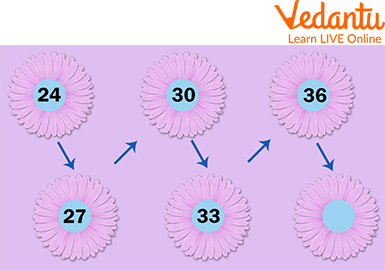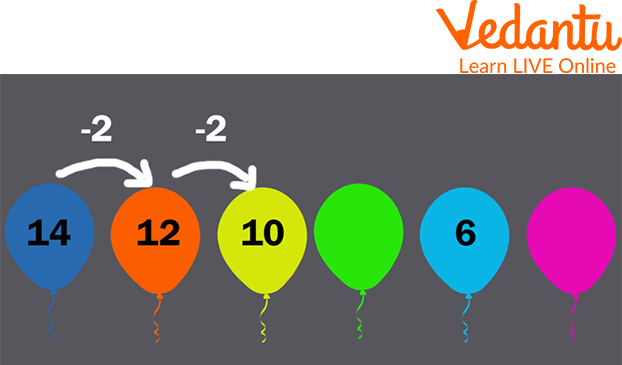




How to Recognize and Apply Patterns in Exam Questions
Do you know what patterns are? Or how to identify them? What to do after identifying them? How are they helpful? Patterns can be anything that is repeated after some time, a design, number, formula, or even a rule. What are the rules? Rules are a set of words that guide you about a particular way of doing something. Today, we will discuss patterns and rules in Maths. We will also discuss how these patterns or rules can solve any problem. By the end of this, we will solve a few examples.
What is a Pattern in Maths?
Patterns in Maths are also called sequences, and these are sets of terms that contain a formula that repeats itself after some time.
Number Patterns
Number patterns are where numbers follow a certain formula and make a sequence from it. There are various types of number patterns, namely, Arithmetic, Geometric, and Fibonacci sequences.

Number Patterns Example
Arithmetic Pattern
Also known as an algebraic pattern, a sequence is formed by adding or subtracting.
Example: 1, -1, -3, -5, -7, -9, and so on.
In the given example, 2 is subtracted from the preceding number, creating the sequence.
1 - 2 = -1
-1 - 2 = -3, etc.
Geometric Pattern
These are formed by using multiplication or division
Example: 1, 2, 4, 8, 16, 32…
Here, we are multiplying 2 to get the next term of the sequence.
1 $\times$ 2 = 2
2 $\times$ 2 = 4, …
Fibonacci Pattern
This is a sequence formed by adding the previous two terms of a sequence.
Example: 0, 1, 1, 2, 3, 5, 8, 13, and so on.
Here, we are adding the first two terms, then the next two, and so on.
0 + 1 = 1
1 + 1 = 2
1 + 2 = 3
2 + 3 = 5, and so on.
Types of Patterns
There are various types of sequences in Maths:
Repeating Patterns
These patterns have rules that keep repeating after some time.
Growing Patterns
These patterns keep growing, which means the value of terms keeps increasing.
Example: In the image given below, 2 is added to the previous number.

Growing Patterns
Shrinking Patterns
These patterns keep shrinking or getting smaller, which means the value of terms keeps decreasing.
Example: In the image given below, 2 is subtracted from the preceding number.

Shrinking Pattern
Rules in Maths
Let’s see the definition of rules in maths. Every pattern has some kind of rule. These rules are used to find missing terms in a sequence, much like adding a number. When trying to understand the nature of the sequence, we use the difference between two consecutive terms to find the rule.
Let’s take an example: 1, 8, 27, 64, 125, etc.
Let the first term be $a_0$, the second be $a_1$, the third be $a_2$, and so on.
Now $a_0$ = 1, which is = 1$\times$1 = 1$\times$1$\times$1,
$a_1$ = 8, which is = 2$\times$2$\times$2,
$a_2$ = 27, which is 3$\times$3$\times$3.
Here, the nature of the sequence is geometric, as the number is the cube of the position of the number (The first number in the sequence is the cube of one, and the second is the cube of 2).
Solved Examples
Now that we have learned about patterns and rules, we will try to solve some examples of patterns and rules examples.
Q 1: Determine the P value in the sequence of numbers: 1, 4, 9, P, 25.
Ans: In the given sequence, the pattern that we see is that every number is the square of the counting numbers.
The square of 1 is 1, the square of 2 is 4, and so on.
Hence, the missing number 'P' is a square of 4, which is 16.
Example 2: Find the value of P and Q in 1, P, 9, Q, 25.
Ans: $1 = 1 \times 1$
$9 = 3 \times 3$
$25 = 5 \times 5$
This explains that a term's value in the given sequence depends on its position. If the position is n, then the term's value is $n^{2}$.
So, $P = 2 \times 2 = 4$ and $Q = 4 \times 4 = 16$.
Example 3: Determine the value of D in the sequence of numbers: 11, 17, 23, 29, D, 41, 47, 53
Ans: By adding the number 6 to the given sequence, we can see the pattern of every number increasing.
11 + 6 = 17, 17 + 6 = 23, and so on.
Hence, the missing number D is 29 + 6 = 35.
Try Some Yourself
Now that we have solved a few examples, let’s see if you can solve some on your own too.
Q 1. Find the value of A and B in 0, A, 8, 15, and B.
Ans: A = 3 and B = 24.
Hint: Subtract one from the square of the position of the term.
Q 2. Find the value of R and S in R, 2, 3, 4, S.
Ans: R = 1 and S = 5.
Q 3. Find the missing numbers in the pattern: 8, ______, 16, ______, 24, 28, 32.
Ans: 12, 20
Summary
Learning patterns improves our ability to spot patterns. We see a pattern that prompts us to think about and determine the rule that will allow the pattern to continue. We use rules to find terms missing from a given pattern. Rules can be found using the relation and difference between two consecutive numbers in a pattern. A pattern in maths is a set of numbers that relate to each other, forming a sequence. Number patterns can be of three types: Arithmetic, Geometric and Fibonacci patterns, while patterns have three types, namely, Repeating, Growing, and Shrinking. As the name suggests, repeating patterns have rules that repeat while the value of terms increases in Growing patterns and decreases in Shrinking patterns.
FAQs on Patterns and Rules in Maths: Concepts, Examples & Practice
1. What is a pattern in Maths as per the CBSE syllabus?
In Maths, a pattern is a sequence or arrangement of numbers, shapes, or objects that repeats or changes in a predictable way according to a specific rule. For example, the sequence of shapes Circle, Triangle, Circle, Triangle... follows a repeating pattern. Similarly, the number sequence 3, 6, 9, 12... follows a growing pattern where the rule is to add 3 each time.
2. How do you identify the rule of a number pattern?
To identify the rule of a number pattern, you should first look at the relationship between two consecutive numbers. Ask yourself:
- Is the next number found by adding or subtracting a fixed number? (e.g., in 5, 10, 15, 20, the rule is 'add 5').
- Is the next number found by multiplying or dividing by a fixed number? (e.g., in 3, 9, 27, 81, the rule is 'multiply by 3').
It is important to check if this rule works for the entire sequence to confirm the pattern.
3. What is the rule for the pattern 2, 4, 8, 16, and what is the next number?
The rule for the pattern 2, 4, 8, 16 is to multiply the previous number by 2 to get the next number. This is an example of a geometric pattern. Following this rule, the next number in the sequence would be 16 × 2, which is 32.
4. Why is identifying patterns and rules an important skill in Maths and daily life?
Identifying patterns is a fundamental skill because it helps develop logical thinking and problem-solving abilities. In daily life, we use pattern recognition to:
- Predict outcomes: Understanding seasonal patterns helps predict weather.
- Understand routines: Following a daily timetable or schedule is based on a pattern.
- Solve problems: Spotting patterns can lead to solutions in puzzles, music, and even coding.
In Maths, it forms the basis for more advanced topics like algebra and data analysis.
5. What are some examples of different types of patterns?
In early mathematics, students typically encounter a few main types of patterns:
- Repeating Patterns: A core unit of elements repeats over and over. For example: A, B, C, A, B, C... or Square, Circle, Square, Circle...
- Growing Patterns: The numbers or objects in the pattern increase at each step based on a rule. For example: 1, 3, 5, 7... (add 2).
- Shrinking Patterns: The numbers or objects in the pattern decrease at each step. For example: 20, 15, 10, 5... (subtract 5).
6. What is the difference between a growing pattern and a repeating pattern?
The main difference lies in how the elements change. A repeating pattern has a fixed set of elements that cycle continuously without changing in value or size (e.g., Red, Blue, Green, Red, Blue, Green). In contrast, a growing pattern has elements that change systematically at each step, usually by increasing in number or size according to a mathematical rule (e.g., 1, 2, 4, 8... where each number is doubled).
7. What is a common mistake students make when finding the rule of a pattern?
A very common mistake is to determine the rule by only looking at the first two terms in the sequence. For example, in the pattern 4, 8, 12, 16, a student might see '4, 8' and think the rule is 'multiply by 2'. However, this rule fails for the next pair (8 x 2 is 16, not 12). The correct approach is to check the rule across at least three consecutive terms to confirm it is consistent. In this case, the correct rule is 'add 4'.
8. Can a sequence have more than one rule?
For a simple mathematical sequence to be predictable, it must follow a single, consistent rule. However, a question can sometimes be tricky. For a sequence starting with 2, 4,..., the rule could be 'add 2' (making the next term 6) or 'multiply by 2' (making the next term 8). This is why having more terms in a pattern is crucial to unambiguously identify the correct rule. Complex visual patterns, on the other hand, might have one rule for colour and another for shape.

















